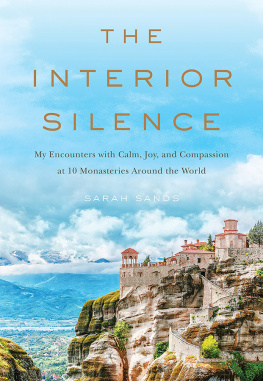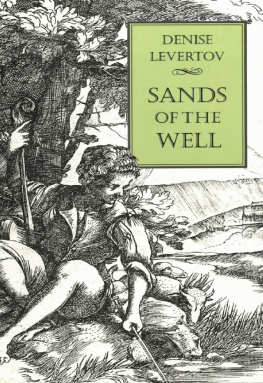Sarah Sands - The Interior Silence: My Encounters with Calm, Joy, and Compassion at 10 Monasteries Around the World
Here you can read online Sarah Sands - The Interior Silence: My Encounters with Calm, Joy, and Compassion at 10 Monasteries Around the World full text of the book (entire story) in english for free. Download pdf and epub, get meaning, cover and reviews about this ebook. year: 2021, publisher: Chronicle Books LLC, genre: Religion. Description of the work, (preface) as well as reviews are available. Best literature library LitArk.com created for fans of good reading and offers a wide selection of genres:
Romance novel
Science fiction
Adventure
Detective
Science
History
Home and family
Prose
Art
Politics
Computer
Non-fiction
Religion
Business
Children
Humor
Choose a favorite category and find really read worthwhile books. Enjoy immersion in the world of imagination, feel the emotions of the characters or learn something new for yourself, make an fascinating discovery.
- Book:The Interior Silence: My Encounters with Calm, Joy, and Compassion at 10 Monasteries Around the World
- Author:
- Publisher:Chronicle Books LLC
- Genre:
- Year:2021
- Rating:4 / 5
- Favourites:Add to favourites
- Your mark:
The Interior Silence: My Encounters with Calm, Joy, and Compassion at 10 Monasteries Around the World: summary, description and annotation
We offer to read an annotation, description, summary or preface (depends on what the author of the book "The Interior Silence: My Encounters with Calm, Joy, and Compassion at 10 Monasteries Around the World" wrote himself). If you haven't found the necessary information about the book — write in the comments, we will try to find it.
Suffering from information overload and unable to sleep, acclaimed journalist Sarah Sands tried countless strategies to de-stress, only to find temporary relief. Searching for something different, something lasting, Sands went on a quest to uncover ancient and proven wisdom for a happier, quieter, and more compassionate life. In this insightful and beautifully written book, Sands takes us along on her pilgrimage to ten monasteries around the world.
In the remoteness of these sacred spaces, Sands observes a hidden knowledge held by monks and nunswhat she calls the interior silence. Renouncing the material world, their inner concentration buoys them in an extraordinary weightlessness and freedom, an oasis of reflection. Behind the cloistered walls, Sands too finds a clarity of mind and an unexpected capacity for solitude.
From a Coptic desert community in Egypt to a retreat in the Japanese mountains, discover another way of beingmoving from appetite, envy, and anxiety to compassion and appreciation. The ultimate remedy for a digital age in which everyone is talking, and no one is listening, this book reminds us of the importance of silence and the power of stillness.
BEYOND MINDFULNESS: The trendiness and explosion of books on meditation and mindfulness does not always solve our modern-day stressors or our fight-or-flight existence. The Interior Silence goes beyond new-age mindfulness to offer traditional wisdom from monks for quieting the mind and embracing simplicity.
DISCOVER ANCIENT WISDOM: For spiritual readers and wisdom seekers, The Interior Silence takes you directly to the root of these ancient practices, learning from monastic life around the world.
FOR ARMCHAIR TRAVELERS: For readers who enjoyed The Geography of Bliss, anyone who enjoys learning about new places and cultures, or for those craving a trip, this book will take you to the countrysides, deserts, and mountains of Japan, France, Egypt, Greece, and more.
Digital audio edition introduction read by the author.
Sarah Sands: author's other books
Who wrote The Interior Silence: My Encounters with Calm, Joy, and Compassion at 10 Monasteries Around the World? Find out the surname, the name of the author of the book and a list of all author's works by series.














